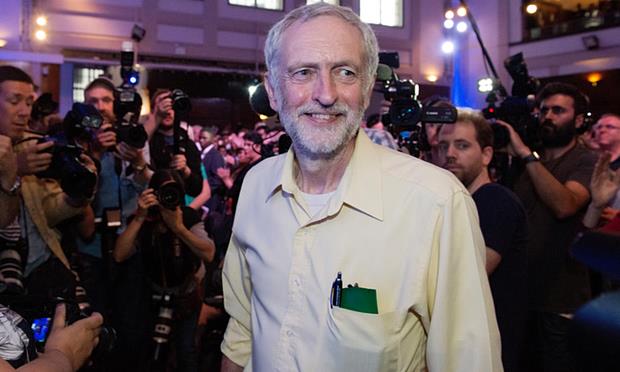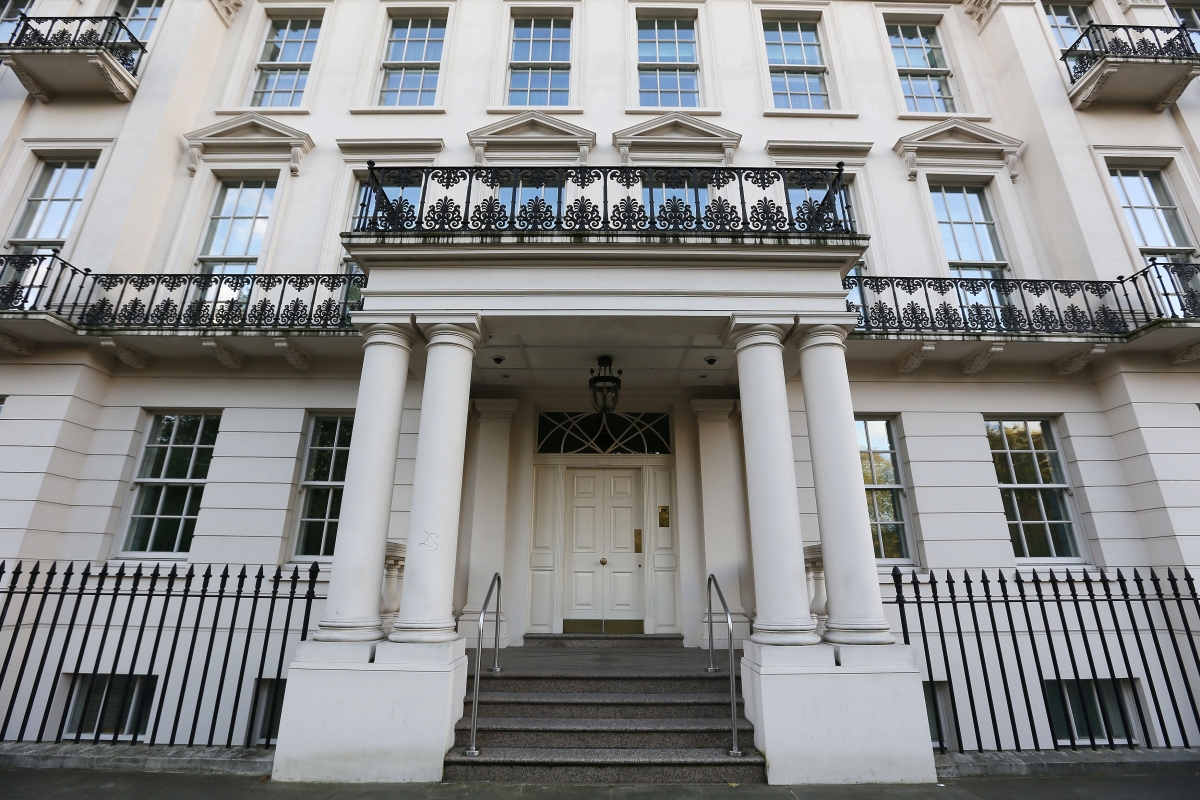Migration and UK Property
09-01-2015
 PropertyInvesting.net team
PropertyInvesting.net team
We aim to deliver objective guidance and insights for property investors with the overall objective of helping you improve your investment returns, flag key risk areas and stimulate strategic thought so you can position your portfolio to maximize gain, for our six thousand website visitors a day and the thousands of people signed up to your Newsletter. This Newsletter cover one key topic:
Migration and UK Property
 Reasons For House Price Rises: Is it any surprize that house prices continue to rise when:
Reasons For House Price Rises: Is it any surprize that house prices continue to rise when:
· Inflation is running at 0%
· Interest rates remain at record lows of 0.5%
· Building levels remain stubbornly low at around 140,000 homes a year – about half the requirement
· There is record employment
· Wage inflation is now running at about 3%
· GDP growth is about 2.5%
· Oil prices have crashed from $110/bbl to $45/bbl
· The UK is considered a safe haven when compared to most mainland Eurozone economies
· There is a population boom – for instance, babies born to foreign mothers rose 27% in the last year along
· The Tories are now in power for five years – unshackled from the Coalition - giving economic confidence in the global UK financial markets
Inward Migration: What we should expect in the next ten years is a continuation of the population and net inward migration trends. The number of people leaving the UK stays quite constant at about 300,000 a year, whilst the number of people entering is rising – currently at about 630,000 a year. Yes – the amount of people coming into the UK is about the size of the population of Liverpool every year. That’s colossal. Because migrants come to the UK – they often then follow-up by bringing their families and extended families and friends to the UK so if anything the 330,000 a year will increase, not decreas e. They also tend to have larger families – their fertility rate is higher than the UK average This will of course put further upward pressure on house prices because no-one is building enough homes and there are not sufficient incentives to encourage this. The new taxes on buy-to-let landlords is an example of making it difficult or impossible to make a profit from buying new build flat that will further discourage investment in property in the next five years.
e. They also tend to have larger families – their fertility rate is higher than the UK average This will of course put further upward pressure on house prices because no-one is building enough homes and there are not sufficient incentives to encourage this. The new taxes on buy-to-let landlords is an example of making it difficult or impossible to make a profit from buying new build flat that will further discourage investment in property in the next five years.
Migration Trends: If one looks at the bigger picture with migration of people to the UK, we see the following trends that if anything will become more pronounced:
1. Globalization – access to technology, networks, education and more plane-rail-road travel means people are aware of opportunities in other countries far more than in decades past – when “dumbed down” people with poorer education and lack of access to the internet would never have known where to and how to migrate from their mother country for a better life
2. Wars-Terrorism The sectarian/religious and terrorist wars in the Middle East have displaced millions of people – ISIS and other extremist groups – these displaced people are desperately trying to leave their mother country to find a better and safer way of life
3. Population The global population is exploding, particularly in poorer developing countries in Africa. Wars rage and resources and good agricultural land is scarce, so people are moving to find a better life
4. Agriculture to Urban: There is a general trend to move to urban areas because they are considered safer than rural area, work is less “manual”, with access to educational opportunities being a key. People will migrate to European urban areas because of their wealth, safety with relatively high paid job opportunities f r people from places like Africa, Asia and war torn Middle East.
r people from places like Africa, Asia and war torn Middle East.
5. Oil Price: As the oil price collapsed - countries like Syria, Iran, Iraq and Egypt have been hit hard with declining oil revenues and some think it is therefore a good time to move to the developed “west”.
6. Climate Change and Water: As central global areas become warmer and water becomes more scarce along with a rising population, people in arid areas are desperately fleeing a lack of water and/or productive irrigated land, along with higher temperatures and high food prices. They look to cooler countries with plentiful water supplies for an easier and more productive life.
7. Transport and Networks: To migrate across the Mediterranean as an example requires: a) access to a boat; b) access to a trafficker; c) transport across land; and d) food-water supplies. It cost a lot of money for the average African or Syrian. Most of these people will be the better off and fitter – younger people, wanting a new life. Access to traffickers and boats is almost certainly improved with the use of mobile phones, internet and social media – with research on location-entry points made far easier now due to the internet/social media phenomena.
8. Contacts: Many migrants who successfully escape hardship/problems in their mother country then facilitate their family or friends to follow them to a country as new communities form – years ago this would have been uncommon – this eighth factor in its own right can lead to an exponential increase in migration. For the UK with its strong ties with Commonwealth countries, the “old colonies”, USA and EU – along with job opportunities and way of life-culture all make it a favoured location of migrants
Exponential Trend: It is our view that all eight of these trends if anything will accelerate – and when they combine and multiple together, the trend for massive migration of populations is set to dramatically increase, not decrease. Overall – one can easily envisage an exponential increase in migration from south to north from Middle East-Africa to Europe. If we think the situation is bad at this time – when we look back in 10 years time, we’ll probably see it as just the beginning of a mass movement.
What Can Be Done: One of the most alarming things about the mass migration for many indigenous people is that on the whole, in part because of the open borders and human rights laws and regulations, countries  are almost powerless to do anything about it. Migrants know this – it’s difficult to challenge normally desperate people for fear of being considered or accused of being inhumane. The flow of migrants – both legal, illegal and asylum seekers – is set to increase not decrease in years to come. It is starting to have similarities with the mass migration during World War II 1939-1945. We have to look to the cold winter and wonder what will happen to all the people without shelter in the cold moving through Europe and what governments will do about this situation.
are almost powerless to do anything about it. Migrants know this – it’s difficult to challenge normally desperate people for fear of being considered or accused of being inhumane. The flow of migrants – both legal, illegal and asylum seekers – is set to increase not decrease in years to come. It is starting to have similarities with the mass migration during World War II 1939-1945. We have to look to the cold winter and wonder what will happen to all the people without shelter in the cold moving through Europe and what governments will do about this situation.
Property: For property investors in the UK – the increasing migration and lack of home building will of course lead to more overcrowding, a more severe shortage of homes, more homelessness and a bigger strain on services like hospitals, schools and social housing – particularly in urban areas like London. Rental property demand will continue to increase – rising at rates above inflation.
Suppression of Inflation: Many migrants looking for jobs will also likely supress wage increases and lead to lower general inflation in most goods and services – except housing and rents. Interest rates and mortgage rates are likely to stay lower for longer because of the low priced labour keeping a lid on inflation. The follow-on growth from the population baby boom will be good for businesses and banks – and help Sterling stay strong and hence further suppress inflation in the UK. It should definitely boost GDP growth – although of course the downside is overcrowding in urban areas and roads-rail-tube-air.
New Generation of Aspirational Tory Voters: In the UK, as the Tory policies take effect shifting public into private expenditure, we will find the migrants generally working in the booming private sector, and the older indigenous British workers staying in the public sector. Because most migrants look for opportunities and want to further themselves with jobs and education, we might find a new generation of centre ground Tory  voting migrants who embrace the private sector view on economics – with lower tax and regulation being key. As New Labour implodes at an accelerating pace – that started with the Blair/Brown project ending in 2010, then Milliband tenure that turned into a Labour disaster – culminating in what looks like a suicidal far left shift to “Corbynomics”, the Tories will effectively be operating in good faith without a serious opposition as of 12 September when the Labour leadership result is announced and Jeremy Corbyn has his champagne celebration party in central London. Make no mistake, Labour will be unelectable and will become a minority protest party led by a 66 year old “Old Labour” leader working in cahoots with the Unions – a throwback to the early 1970s socialist agenda, strikes and a 3 day week.
voting migrants who embrace the private sector view on economics – with lower tax and regulation being key. As New Labour implodes at an accelerating pace – that started with the Blair/Brown project ending in 2010, then Milliband tenure that turned into a Labour disaster – culminating in what looks like a suicidal far left shift to “Corbynomics”, the Tories will effectively be operating in good faith without a serious opposition as of 12 September when the Labour leadership result is announced and Jeremy Corbyn has his champagne celebration party in central London. Make no mistake, Labour will be unelectable and will become a minority protest party led by a 66 year old “Old Labour” leader working in cahoots with the Unions – a throwback to the early 1970s socialist agenda, strikes and a 3 day week.
Tax and Housing Shortage: Meanwhile the draconian buy-to-let tax increases announced recently by the Tories will deter many investors from buying new build flats and homes, so with the booming southern England population, inward migration escalation and massive shortage of properties, expect property prices to rise further with less building, and rents to rising sharply in the next few years as many buy-to-let invest exit the market. We predict a rental crisis by 2018 – simply not enough rental properties and rapidly escalating rents in London in particular.
 UK Fairs Well Versus Rest of World: We believe that the economies in many developing nations like China, India, South America and Africa will slowdown by late 2015, mainland Europe will struggle and the safe haven investment in the UK and USA will continue to attract major investors into prime property ad large commercial-offices during this slowdown. This slowdown, despite what the BoE Chief Mark Carney is telling us, will delay interest rate rises. We cannot see any interest rate rise until mid-2016 at the earliest. We think there is an equal chance of a loosening money printing stimulus compared to a tightening interest rate rise in the UK in 2016. This will keep the property prices rising at a fairly stable annual 3-8% in the next 12 months. It’s no coincidence the economic boom and stability with jobs growth directly correlates with the Tory party starting to stake control of the economy in 2010 by repairing the severe damage Labour had done in the previous 13 years – this work continues new with a majority government and we can look forward to a relatively stable economic environment when compared to mainland Europe in the next five years.
UK Fairs Well Versus Rest of World: We believe that the economies in many developing nations like China, India, South America and Africa will slowdown by late 2015, mainland Europe will struggle and the safe haven investment in the UK and USA will continue to attract major investors into prime property ad large commercial-offices during this slowdown. This slowdown, despite what the BoE Chief Mark Carney is telling us, will delay interest rate rises. We cannot see any interest rate rise until mid-2016 at the earliest. We think there is an equal chance of a loosening money printing stimulus compared to a tightening interest rate rise in the UK in 2016. This will keep the property prices rising at a fairly stable annual 3-8% in the next 12 months. It’s no coincidence the economic boom and stability with jobs growth directly correlates with the Tory party starting to stake control of the economy in 2010 by repairing the severe damage Labour had done in the previous 13 years – this work continues new with a majority government and we can look forward to a relatively stable economic environment when compared to mainland Europe in the next five years.
We hope this Newsletter has been insightful and helpful in framing property investment opportunities for your portfolio moving forwards. If you have any queries, please contact us on enquiries@propertyinvesting.net

